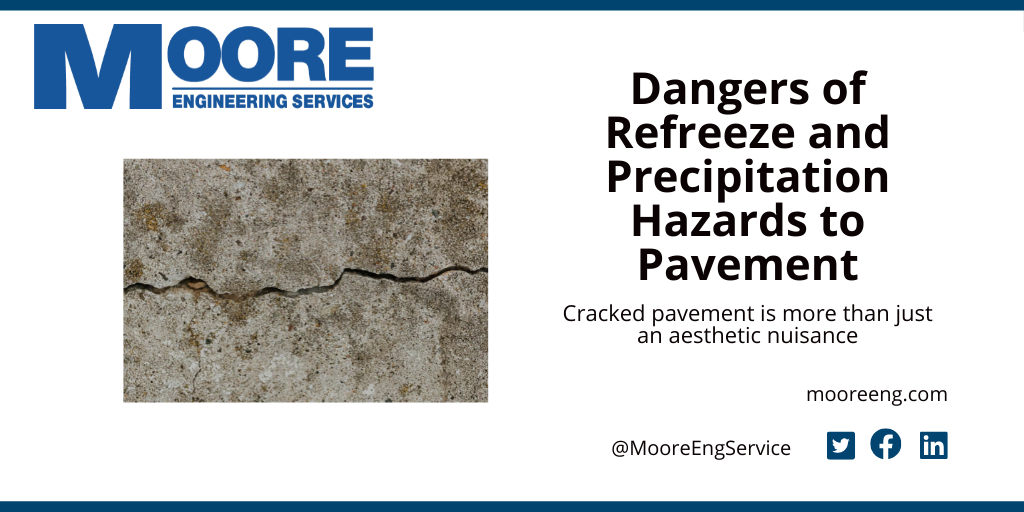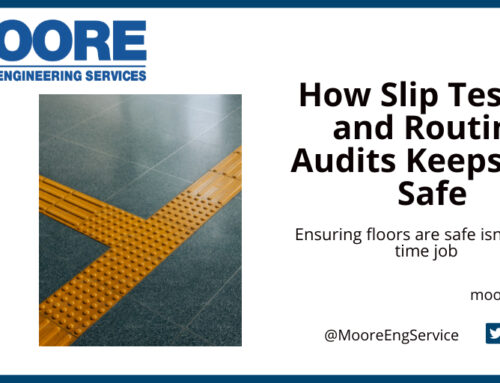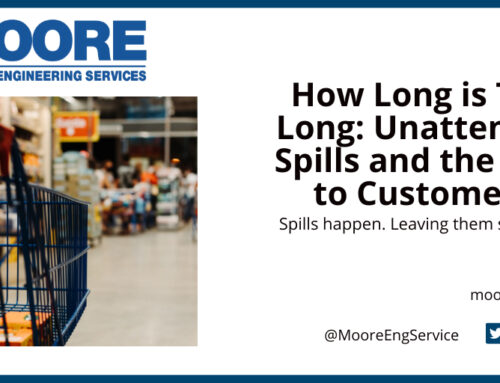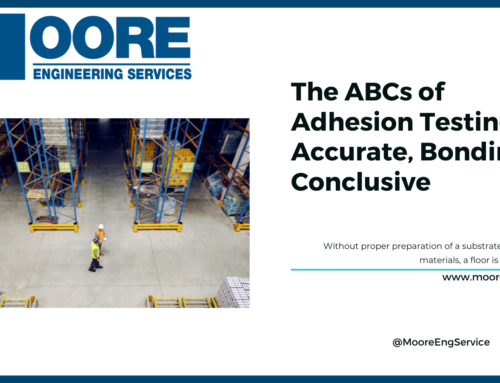We have a lot to worry about during the snow season. Proper salt application and snow plowing should be any business owner and snow contractor’s number one priority, but how many times after a snow season have you noticed new cracks and depression in your pavement? Maintaining walkways safe is a business owner’s and property manager’s responsibility, as is repairing pavement, but without understanding why this pavement failing happens, shoveling out the cost for repairs can be frustrating.
Understanding the Freeze/Thaw Cycle
We’re all familiar with cyclical and fluctuating temperatures. Especially living in New Jersey, I am used to it being 50°F one day, to then drop below freezing just a few days later. If you’ve experienced early spring in New Jersey, you know this can even occur within a twenty-four-hour period! While this temperature fluctuation can make outfit decisions difficult, this is what we refer to as the freeze/thaw cycle or refreeze.
Asphalt is best laid out during warmer months because it is flexible, but when temperatures decrease, the asphalt becomes hard and brittle. This is exacerbated by liquid. When the ambient temperatures are above freezing, precipitation will settle into any crack within the asphalt. As temperatures freeze, so does the water, and water expands approximately 10% when frozen. This creates pressure from inside the pavement, leading to expanding cracks and broken asphalt. Now imagine this happening dozens of times over the course of winter. No wonder so many potholes get patched during spring and summer.
Mitigating Pavement Dangers
Perhaps you may think this is merely an aesthetic nuisance. We know asphalt pavement doesn’t stay pristine forever, but when cracks and depressions form, so do trip hazards. ASTM F1637 Standard Practice for Safe Walking Surfaces provides specific measurements for what constitutes a trip hazard, and the industry agrees that any change in level over ¼ an inch poses a risk to pedestrian safety.
It is important to maintain your property against these hazards. If you are at the start of a construction phase, appropriate drainage should always be taken into consideration, such as directing water flow toward a collection basin to lessen the possibility of standing water. Drainage helps prevent not just against freeze/thaw, but also ice forming.
Taking care to seal the pavement is also necessary. Make sure that you are using the right kind of crack and sealcoat products and are doing so at reasonable intervals to protect against water seeping into cracks. Doing so can also help prevent the need to patch areas of the asphalt when the cracks or potholes get out of control. Remember, patching is a temporary, but sometimes necessary, fix in absence of repaving the whole area.
Knowledge to Protect Yourself
While the freeze/thaw cycle isn’t something we can control, just as we can’t control rain or snow, we always have control over how we mitigate damage and hazards. I’m always shocked at the amount of parking lots I drive through with large potholes and trip hazards. Perhaps not everyone understands the scientific nature of how these hazards form, which is why I am explaining it to you. When you understand the cause of potential damage, it is so much easier to figure out how to prevent it.
We are certified engineers and technicians that offer thorough Walkway Safety Auditing to assess any risks or hazards on your property, ranging from slip and trip hazards of any kind. For more information, contact us via phone at 856-437-7900 or fill out the contact form below.
As always, Test Moore, Fail Less.






Leave A Comment